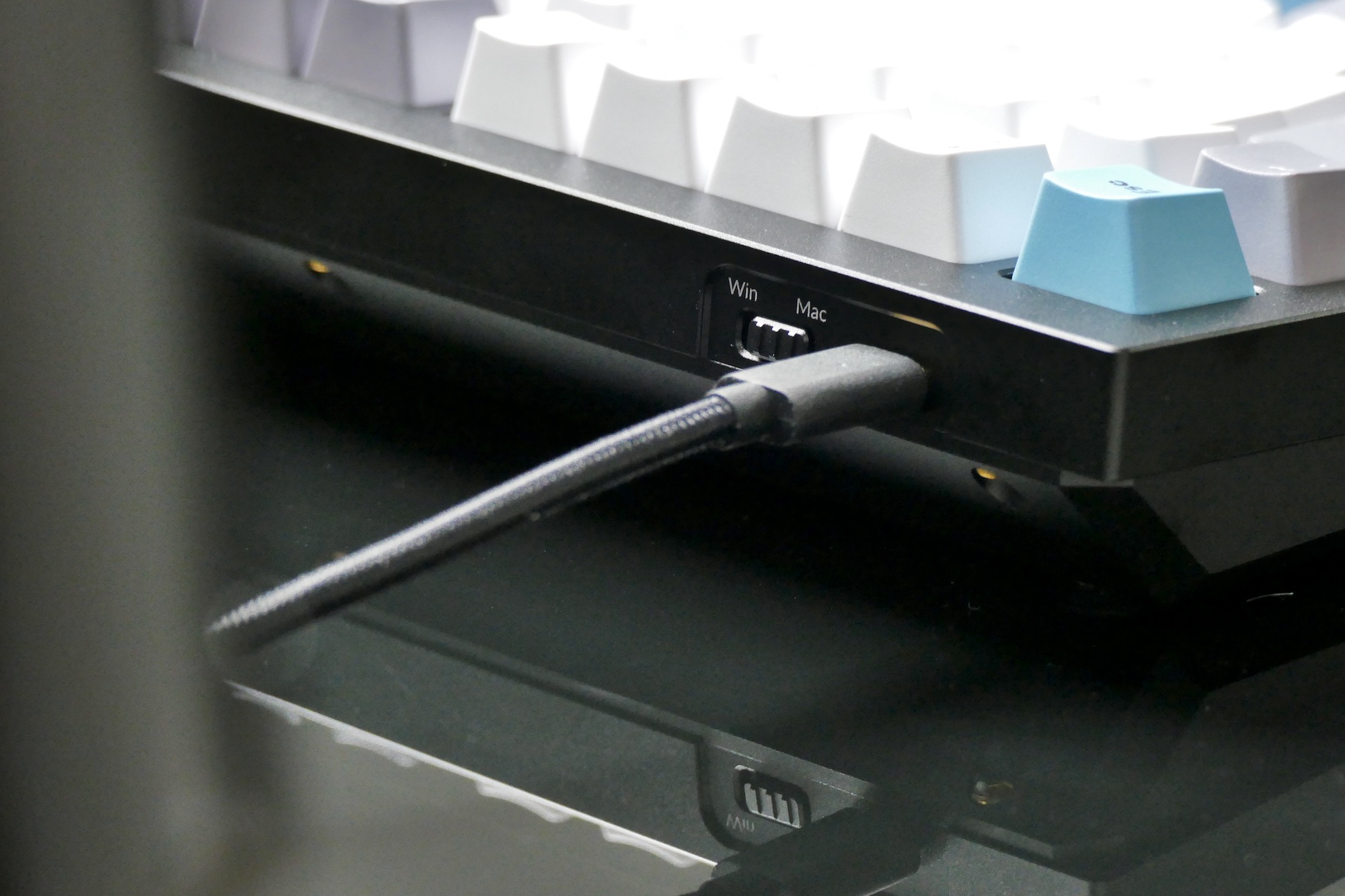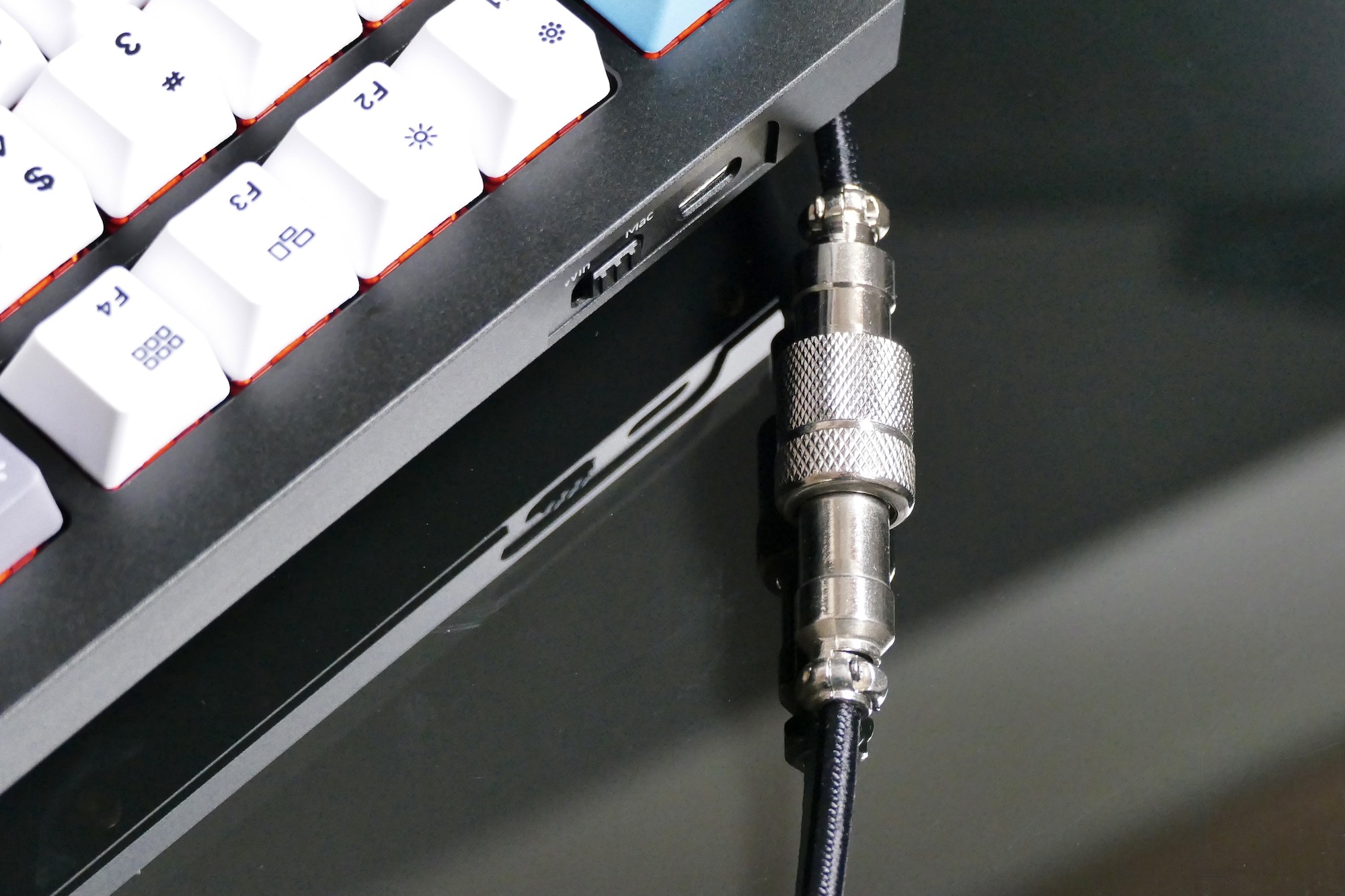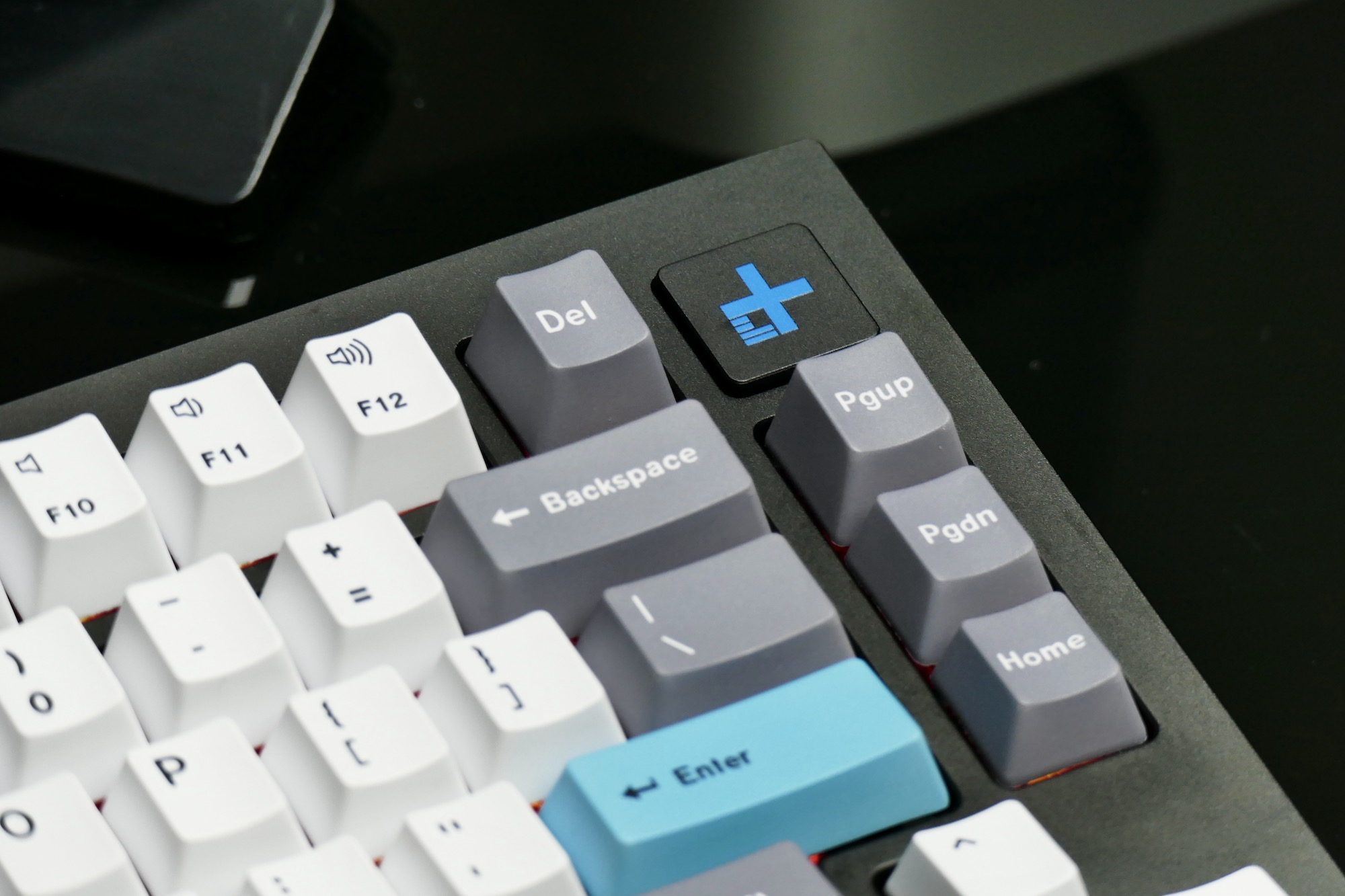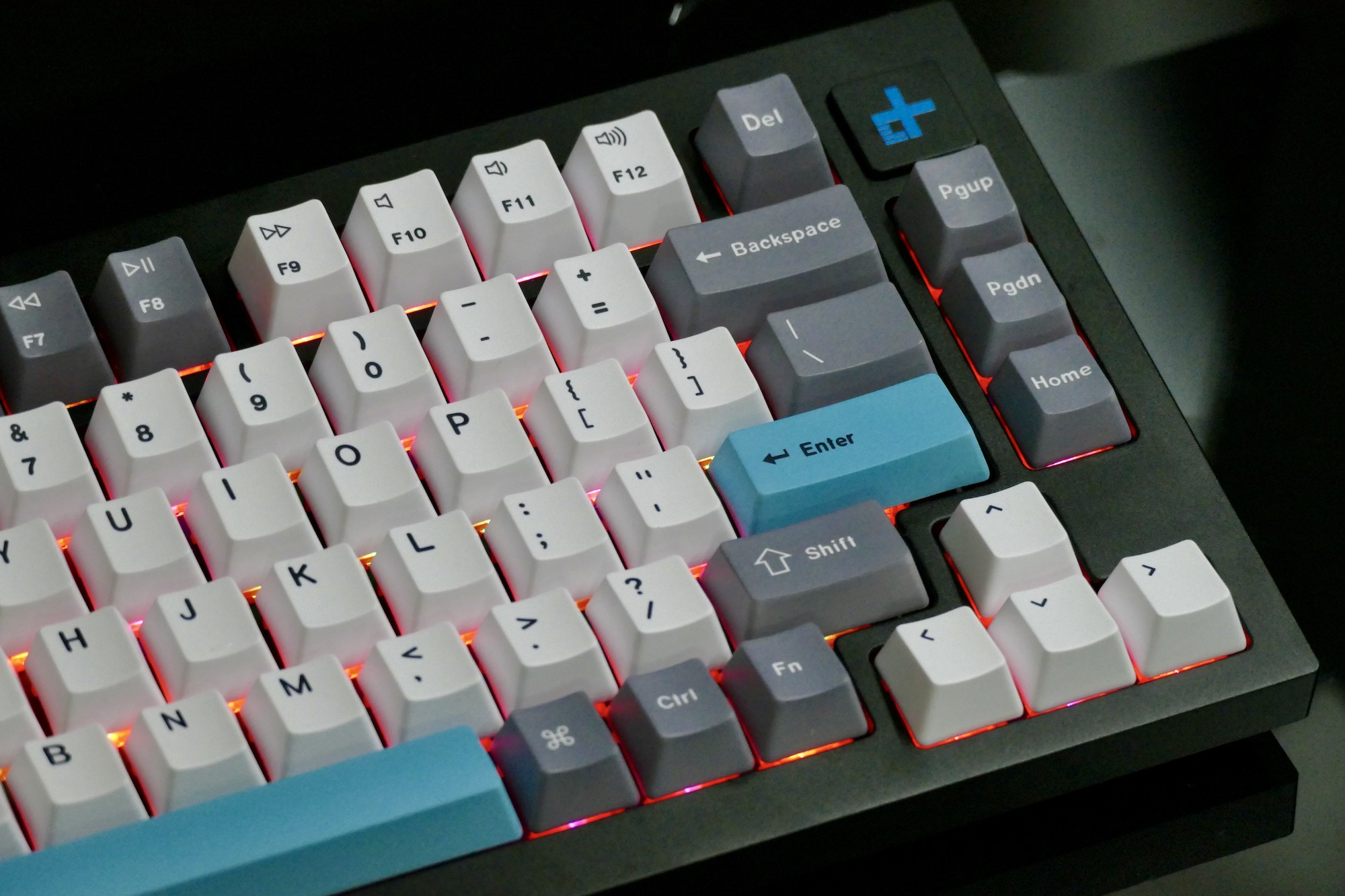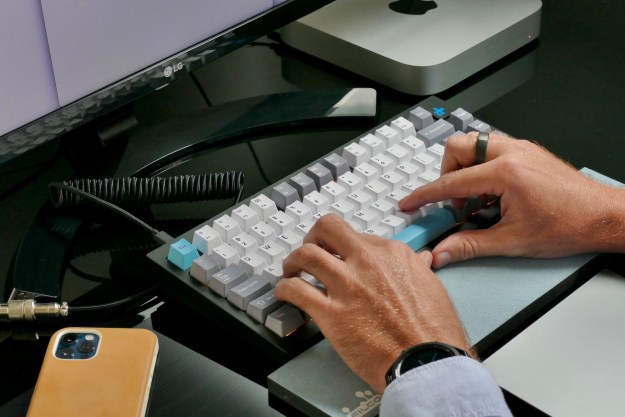
“The Keychron Q1 mechanical keyboard is as customizable as you want it to be, with plenty of options to personalize your typing experience and make it last longer, and for a price that's similar to non-customizable models.”
- Range of customizable elements
- Aluminum case is durable
- Works with Mac and Windows
- Key mapping software compatibility
- No Bluetooth
- No height or angle adjustment
The Keychron Q1 is a customizable mechanical keyboard that’s a step up from the brand’s regular mechanical keyboards. It provides a tailored typing experience for the connoisseur, complete with hot-swappable sockets for different switches and support for open-source key-mapping software. At first glance, it seems very complicated and that you need to be a keyboard expert to get the best from it.
My daily use keyboard is usually a Keychron K2V2, and I’ve long considered it to be the best keyboard to suit my needs. Would stepping up to the Q1 change that, and is having the option of customization really worth the effort? Another key question: Is it accessible to all kinds of users? I’ve been typing on it for more than a week, and I’ve been delighted by the experience so far.
Design

The Keychron Q1’s top and bottom case is made from CNC-machined aluminum, and the 327mm-long body houses a 75% keyboard. It’s designed to be customized and to have new switches installed — either 3-pin or 5-pin — on the PCB, which doesn’t require any soldering. It’s can be ordered either pre-built, or as a “bare-bones” kit ready for you to make yourself. with your choice of keycaps, switches, gaskets, and sound deadening.
My review version came preassembled with Gateron Brown switches and Keychron’s own ABS plastic keycaps. The final element of customization comes with the option of adding a logo of your choice in the top right-hand corner of the keyboard. Keychron placed the Digital Trends logo on this one, and it looks great (see below). The modification costs $30 and will obviously extend the delivery time should you select it.
The Q1 is a seriously weighty piece of kit, which along with very grippy rubber feet, stops it from moving around on the desk. Despite not having any way to change the height or angle, I found it was just right for comfortable and quick typing without fatigue, but that won’t be the case for everyone, and I’m surprised Keychron hasn’t provided any adjustment in such a customizable package. You can order the keyboard in black, blue, or a smart-looking gray.

I like the subtle design that doesn’t scream “gaming keyboard” like many mechanical offerings, and instead will look at home on any desk, regardless of whether you’re gaming or working on it. The south-facing RGB lights are more noticeable than on my K2V2, and it’s easy to change the style by pressing the function and Q keys at the same time. When you change the switches, the base RGB color also alters, and you can see the enhanced red effect via the Gateron Red switches in our photos.
If a keyboard is made to be used for typing all day and not gaming, design is rarely focused on by the manufacturer, and a keyboard becomes just a keyboard, and the design is what it is. Not so with the Keychron Q1, because if you don’t like the keycap color combination in our photos, you can customize it and make it entirely your own. The same goes for the case color, the little logo, and the overall typing experience.
Connection and software
The keyboard is attached to your computer using a thick, braided, very high-quality USB Type-C to Type-C cable, complete with an aviator-style socket in the middle to enable different connections. There’s a curly section in the middle for aesthetic purposes only. A USB Type-C to Type-A adapter is included in the box, along with a series of tools to change the switches, stabilizers, and keycaps on the keyboard.
When hooked up, there’s a switch on the back of the keyboard to specify use with either Mac or Windows. The Keychron Q1 does not have Bluetooth, so it can’t be used wirelessly with your computer, or linked to an Apple iPad or other tablet. That’s Ok as it’s not suitable for use when you’re out and about anyway, as it’s too heavy to carry around.
Keychron advertises the Q1 as being compatible with QMK key remapping software for Windows and Via software for Mac. However, Via would not install on my Apple Mac Mini M1 with Big Sur, and the Via website isn’t the friendliest if you’re not familiar with installing software outside of the Mac App Store. When I asked about this, Keychron indicated the software should work without a problem on my machine, so it may be an isolated issue.
I like the subtle design that doesn’t scream “gaming keyboard” like many mechanical offerings.
Before the first use on my Mac, the system required a few specific keypresses for it to recognize the Q1, but outside of that, there was no setup needed. I have no real need for the remapping or macro tools provided by Via, so the fact it didn’t work wasn’t an issue, and the keyboard has operated without fault. However, if you do need custom settings and use a Mac, you may need some patience or a deeper understanding of how to install non-App Store software to get them.
Typing

Coming from the Keychron K2V2, the Keychron Q1 was noticeably quieter when typing, despite me using Gateron Brown switches on both. The sound deadening inside the case does a great job, but it does sound a little hollow, something Keychron is aware of and addressing with the option for additional sound deadening foam for you to add if needed. The gasket mounts provide plenty of spring and give when pressing the keys, and Keychron says the gaskets enable 2.5mm of travel. If you want more sound from the Q1, you can change the switches to the more clicky Gateron Blue versions.
The model I am reviewing comes with an ANSI layout and not my preferred ISO style, where the Enter key is much larger. This meant the keyboard took a little while to get used to, as my little finger would tap both the Enter and the Shift key when typing quickly. Now that I’m more used to it, my typing speed and accuracy is the same as it was on the Keychron K2V2, suggesting that if you’re used to a mechanical keyboard already, you won’t have any trouble adjusting to the Q1.
The standard ABS key caps feel to be of higher quality than the ones on the Keychron K2V2, with a less plasticky under-your-finger texture and a comfortable indentation. However, I swapped the keycaps to a different set made from Polybutylene Terephthalate (PBT) that have an even better feel, and should resist fading and shine for longer, too. Keychron sells PBT keycap packages for $40, making them quite expensive, but it’s a worthwhile upgrade for the better feel and increased durability.

It takes less than 30 minutes to swap all the keycaps over using the supplied tool, but longer to do the switches. It’s not a difficult job, as a “puller” tool is included in the box. However, you do need patience as it’s a time-consuming and sometimes painful process because it takes a lot of effort to break the switches free of the PCB. I swapped the Gateron Brown switches to a set of Gateron Red switches, which took about 45 minutes. Because the switches require some force to remove, it’s all too easy to scratch the aluminum of the chassis when doing so, but this can’t be seen once it’s all back together. I would not want to change the switches on a regular basis, but having the option to do so is a considerable benefit.
Why? Experimentation, because enjoyable typing is a surprisingly individual thing. The feel of the Red switches surpasses the Brown switches for me, allowing me to type even faster and more precisely, something I wasn’t aware of until playing around with the customizable Q1. Generally, there’s a wonderful solidity to the typing experience on the Q1, especially when compared to the plastic-bodied K2V2. Each keypress has a pleasing amount of damping, is nowhere near as loud, and yet still feels very satisfying. The Brown switches here require more force to satisfyingly activate compared to the Brown ones fitted to the K2V2, interestingly.

Despite trying several different mechanical keyboards recently — the Keychron K3, and the Azio Izo, for example — I’ve always returned to the Keychron K2V2. I don’t expect to do this with the Q1. The solidity provided by the metal body, the excellent Gateron Red switches that I’ve spent time installing, the quieter sound (I record interviews, and hearing the clatter of the K2V2 keyboard during them when I take quick notes is very annoying), and that I seem to be a better and faster typist using it will keep it on my desk.
All this discovery was really enabled by the Q1’s flexibility, which extends far further than my knowledge and needs go, making this an excellent choice for the novice and experienced enthusiast alike.
Price and availability
The Keychron Q1 is available to pre-order now, with shipping expected to start around September 15. Fully assembled in any of the three colors, the Q1 costs $169, although this is a special offer price according to the online store, and the cost may rise to $179 at any time. The bare-bones versions are not available to order at the time of writing, and will be available shortly after the fully assembled version’s release.
Our take
The benefits of customization were a little lost on me before I spent time (quite a lot of time, actually) swapping between switches and keycaps on the Keychron Q1, then comparing the typing experience to my Keychron K2V2. Having settled on the keycaps and switches that felt best for me, it’s clear that there is an ideal keyboard setup for everyone, and the benefits are obvious when you get it right. Understanding and discovering your ideal setup will come through trial and error, but having a keyboard like the Q1 minimizes the pain and expense, and it will subsequently last for years if you’re willing to invest in it.
Knowing I can change all the parts again at any time, and also go deeper into the customization by adding foam sound deadening (or removing it) and changing the stabilizers and gaskets as well, means the keyboard is genuinely future-proofed. It’s a keyboard that can grow with you, or simply stay as it is, for not a lot more money than a non-customizable mechanical model.
I’m a relative newcomer to mechanical keyboards, but have been sold on the concept since swapping to one. The Q1 isn’t only for enthusiasts wanting to create their own “ultimate” keyboard, but for those like me who want a high-quality, extremely solid mechanical keyboard for work that really suits my style and preferences, without the need to buy an entirely new keyboard if anything alters or breaks.
Is there a better alternative?
The Glorious GMMK Pro is the Q1’s direct competitor, and it’s another aluminum, highly customizable mechanical keyboard with a 75% size. It costs the same and has a rotary knob for media control, but does not support Via remapping software, only QMK for Windows.
If you aren’t worried about the customization, we recommend the Corsair Straife RGB Mk.2 mechanical keyboard, which is also around $160 and provides a great experience when both working and gaming. You can also check out our extensive roundup of the best mechanical keyboards or the best keyboards in general if you’re looking for other choices.
How long will it last?
The aluminum case and modularity of the components means there’s a whole lot of life in the Keychron Q1, unless you spill something all over it, as it’s not water-resistant. Keychron provides a 12-month warranty, but in the case of the Q1 will replace the defective parts rather than the entire package.
Should you buy one?
Yes. It’s an absolute pleasure to type on, and the extensive customization options mean it will last for years.

